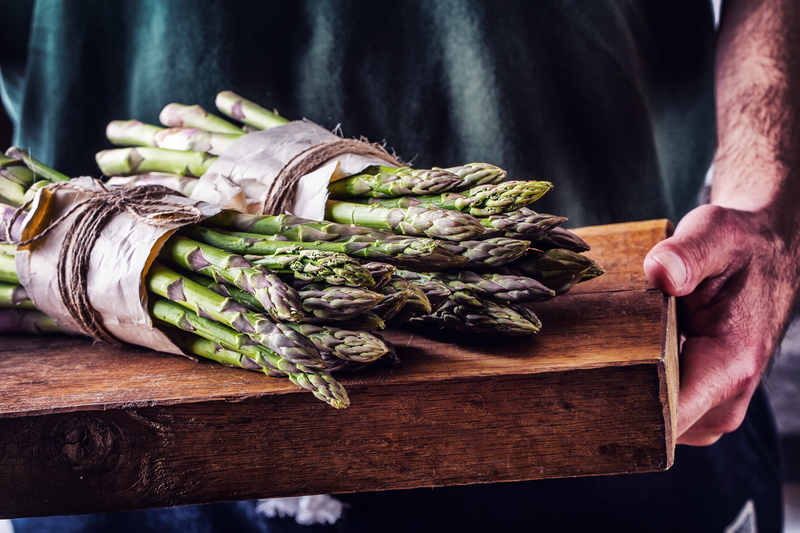Your Guide to Defending Your Lawn Against Summer Drought Damage
Summer droughts pose a significant threat to the health and beauty of your lawn. As temperatures soar and rainfall diminishes, even the most well-maintained turf can suffer from drought stress. Nobody wants to see their lush, green carpet turn brown and brittle! Fortunately, there are effective strategies to help you prevent, minimize, and even reverse drought damage on your lawn. This comprehensive guide will provide actionable tips and insights on defending your lawn against summer drought damage, ensuring your yard remains vibrant and resilient throughout the hottest months of the year.
Understanding the Impact of Drought Stress on Lawns
Drought stress occurs when the soil lacks sufficient moisture to meet your lawn's needs. This leads to a series of visible and invisible changes, including:
- Discoloration: Lawns often turn yellow or brown as grass enters dormancy to conserve water.
- Weakened root systems: Extended dry periods prevent roots from drawing in enough water and nutrients.
- Increased susceptibility: Drought-stricken grass is more vulnerable to pests, weeds, and diseases.
Learning how to protect your turf from dehydration during the summer is the first step to maintaining a resilient landscape.

Step 1: Choose Drought-Tolerant Grass Varieties
The foundation of a drought-resistant yard starts below the surface. Some grass species are naturally better equipped to handle dry conditions than others. When considering a new lawn or overseeding an existing one, opt for drought-tolerant grass types such as:
- Bermuda Grass: Thrives in full sun and recovers quickly from dry spells.
- Zoysia Grass: Known for its dense growth and excellent drought resistance.
- Buffalo Grass: Native to North America, requires little water once established.
- Tall Fescue: Deep root system makes it more resilient than other cool-season varieties.
By selecting the best grass for summer drought conditions, you give your lawn a natural advantage.
Step 2: Cultivate Healthy Soil for Improved Water Retention
The secret to defending your lawn from drought damage lies in the soil. Healthy soil absorbs and retains water more efficiently, providing a buffer during dry spells. Here's how:
Aerate Regularly
- Aeration alleviates compaction, allowing water and nutrients to penetrate deeper.
- Perform aeration at least once per year, preferably in the spring or fall.
Amend Soil with Organic Matter
- Add compost or well-rotted manure to boost soil structure.
- Organic matter helps sandy soils retain more moisture and improves clay soils' drainage.
Mulch Lawn Edges
- Apply mulch around flower beds and trees to reduce surface evaporation and insulate roots.
Prioritizing soil health equips your yard to withstand the rigors of summer droughts.
Step 3: Water Wisely to Combat Drought Stress
Knowing how to water lawns during a drought is crucial to their survival. Overwatering can be as damaging as under-watering, so employ these best practices:
Water Deeply and Infrequently
- Encourage roots to grow deeper by soaking the soil 4-6 inches deep.
- Avoid shallow, daily watering, which promotes weak, surface-level roots.
Water Early in the Morning
- Early watering (between 4-9 AM) minimizes evaporation and reduces fungal disease risk.
Use Smart Irrigation Systems
- Install weather-based controllers or moisture sensors to optimize watering schedules.
- Consider drip irrigation or soaker hoses for efficient, targeted watering.
With these methods, you can defend your lawn against drought stress while protecting this valuable resource.
Step 4: Adjust Mowing Practices During Drought
The way you mow your lawn during heat waves can drastically influence its resilience. Follow these drought defense mowing tips:
Set Mower Blades High
- Leave grass taller (3-4 inches) to shade the soil and reduce moisture loss.
Keep Blades Sharp
- Dull blades tear grass, increasing disease susceptibility and stress.
Avoid Cutting More Than One-Third
- Never remove over one-third of the grass height at a time, especially during dry spells.
Proper mowing keeps the grass healthy and better prepared to weather drought conditions.
Step 5: Fertilize With Care in Summer Heat
Excessive fertilization during drought can do more harm than good. Grass plants in drought are already stressed and can be burned by heavy feeding. Here's how to fertilize sensitively:
- Use slow-release or organic fertilizers to avoid sudden nutrient spikes.
- Time applications: Fertilize lightly in late spring or early fall, rather than midsummer.
- Test your soil to identify actual deficiencies before applying fertilizer.
Feeding lawns during heat waves should be done minimally or delayed until adequate moisture returns.
Step 6: Control Weeds--Your Lawn's Drought Rivals
Weeds compete with your grass for available water, quickly overtaking thin or stressed areas during drought.
Preventative Measures
- Maintain a thick, healthy lawn to crowd out weeds (overseed bare patches as needed).
Manual Removal
- Hand-pull weeds to prevent further spread, especially before they set seed.
Spot Treatments
- Use herbicides selectively, as many products warn against use on drought-stressed turf.
Controlling weeds is an often overlooked aspect of successful lawn drought defense.
Step 7: Embrace Mulching for Moisture Retention
While mulching is common in garden beds, it can also be applied in areas of your lawn prone to drying out or along the edges where heat is intense. Benefits include:
- Reduced soil evaporation by blocking direct sun exposure.
- Stabilized soil temperatures, which prevents heat stress on roots.
- Suppressed weed growth by smothering competing plants.
Use organic mulches like shredded leaves, bark, or straw, and spread a layer about 2-3 inches thick for best results.
Step 8: Integrate Drought-Resistant Landscaping Features
Defending your lawn from drought damage isn't just about grass--it's about integrating smart landscaping choices:
- Plant native grasses and groundcovers that require less water.
- Install rain barrels to harvest and store water during occasional showers.
- Create shade with trees or shrubs that shield turf from the afternoon sun.
- Design drought-tolerant borders with gravel, rocks, or mulch instead of grass.
Sustainable landscaping makes your entire yard more resilient against summer drought damage.
How to Recognize and Reverse Drought Damage
Despite your best efforts, some drought symptoms may still appear. Identifying and responding quickly can help reverse the effects:
- Footprinting: Grass stays flat after being stepped on, indicating low moisture.
- Color Change: Blue-gray or brown patches signal water stress or dormancy.
- Thin/Dead Patches: Bare spots may need overseeding come fall.
Gradually resume deeper, less frequent watering, and avoid traffic on stressed areas to help your lawn recover from drought. Over time, with improved care, most healthy lawns will rebound once rain returns and temperatures moderate.
Common Myths About Lawns and Drought
-
Myth: Your lawn is dead if it turns brown during a drought.
Fact: Most grass goes dormant rather than dying and will revive with proper care and rainfall. -
Myth: Frequent, light watering is best in hot weather.
Fact: Deep, infrequent watering is more effective for root health and drought resistance. -
Myth: You should fertilize heavily to keep up with summer growth.
Fact: Too much fertilizer can burn stressed grass--always avoid feeding during peak drought.

Frequently Asked Questions on Defending Lawns Against Drought
How often should I water my lawn during a summer drought?
Aim for one deep watering session per week, enough to moisten the soil 4-6 inches, unless local restrictions are stricter.
Will my grass recover after a summer drought?
Most established lawns can recover from summer drought with proper post-stress care. If recovery is slow, consider overseeding with drought-resistant varieties in the fall.
Is brown grass the same as dead grass?
No, brown grass is often dormant rather than dead. If the crowns (base of the grass blades) are still firm and white inside, the grass is alive and can green up again.
What is the best mowing height for lawns during a drought?
Keep your grass at 3-4 inches tall to shade the soil, encourage deep roots, and reduce stress.
Conclusion: Your Action Plan to Defend Your Lawn from Summer Drought
Defending your lawn against summer drought damage requires preparation, observation, and patience. By choosing drought-resistant grasses, cultivating healthy soil, managing water wisely, and adjusting maintenance techniques, you can ensure your lawn remains resilient and beautiful even in the toughest summers.
Remember: Many of the best defenses against drought are about prevention and long-term lawn health. Start applying these strategies before drought hits, and you'll enjoy a thriving green lawn, season after season. For more tips on protecting your grass during water shortages, be sure to consult with local turf specialists or cooperative extension services in your area.
Keep your lawn lush, strong, and drought-proof--follow this guide to success, and let your yard shine no matter how dry the summer may be!